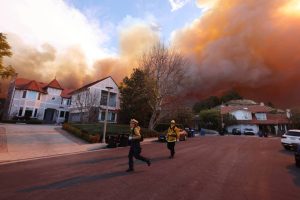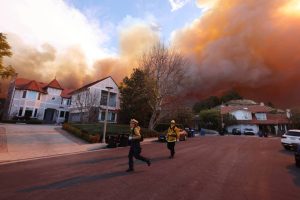Breaking News:
It began like any other winter morning — cool air, quiet streets, and the gentle hum of a city waking up. But within hours, Los Angeles was staring into an inferno. Smoke choked the skyline, the sun disappeared behind an angry orange haze, and sirens became the soundtrack of survival. Families fled with whatever they could grab, unsure if they’d have a home to return to.

From January 7 to 31, 2025, in the heart of Southern California, two colossal blazes, the Palisades Fire and the Eaton Fire, tore through Los Angeles County with a fury rarely seen in modern history. By the time the last embers cooled, the destruction was staggering: 57,000 acres reduced to ash, more than 18,000 buildings destroyed or damaged, and 30 lives lost. The economic toll? Over $50 billion.
Why the Flames Won at First
The perfect storm was already in place: hurricane-force Santa Ana winds, bone-dry hills from years of drought, and a nearly empty Santa Ynez Reservoir, which left firefighters scrambling for water in the first critical hours.
The Battle in the Flames
Firefighters from seven states joined the fight, backed by helicopters and massive air tankers that thundered through the smoky skies. But even with that firepower, it took until January 31 to finally declare the crisis over.Picking Up the Pieces
The state launched “LA Rises”, an ambitious $2.5 billion rebuilding effort. The Los Angeles Dodgers Foundation pledged $100 million, and benefit concerts lit up the city — not with fire this time, but with hope.
The Takeaway
These fires weren’t just a disaster — they were a warning. Budget cuts, aging water systems, and slow response times left the region vulnerable. The lesson is clear: if these cracks aren’t fixed, history could burn its way back.



